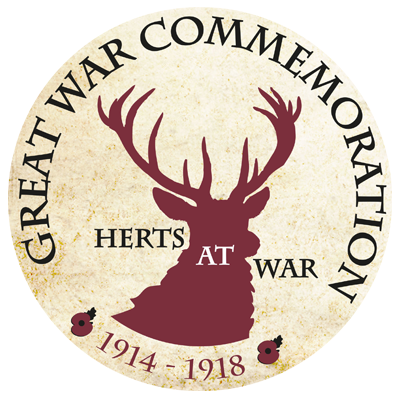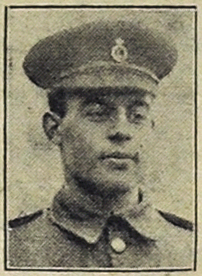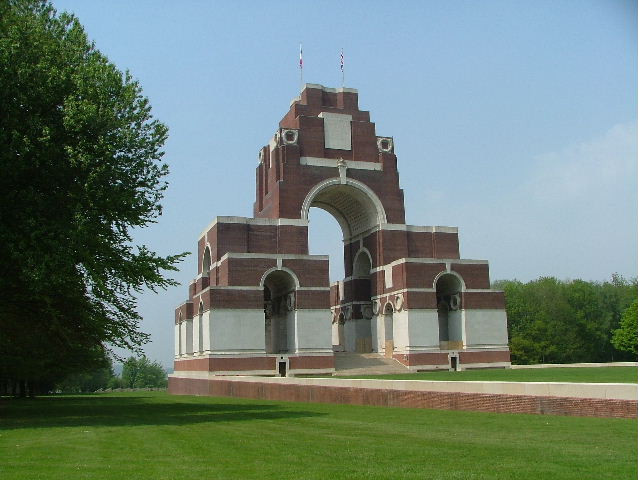Wartime Service
He later transferred to the 6th Battalion Princess Charlotte of Wales’s (Royal Berkshire Regiment). His entry in the National Roll of the Great War states:
He joined in November 1916 and was almost immediately drafted to the Western Front. In this seat of war he took part in important engagements and was killed in action at Delville Wood on February 17 1917. He was entitled to the General Service and Victory Medals. 13 Barnard’s Yard, Hitchin.
Given the date of his death, which his Soldiers Effects Register entry clarifies took place on or since 17 February 1917, it was the Battle of Boom Ravine not Delville Wood in which he lost his life.
The Battle of Boom Ravine, known officially as the Actions of Miraumont, was named after a system of sunken roads which formed a rugged letter T shape, south of the Ancre River between the villages of Petit Miraumont and Grandcourt. The overall objective of the battle was the capture of Hill 130, the heights of which gave the Germans a valuable viewing point.
Three Divisions were involved (2nd, 18th and 63rd), each deploying a portion of their Brigades. The 18th Division used their 53rd Brigade, of which the 6th Royal Berkshires were part, and 54th Brigade. Each component of the attack had its own specific set of objectives, which when combined would achieve the overall Hill 130 objective. The 6th Royal Berkshires were tasked with taking a stretch of the Grandcourt Trench and, beyond that, three short lengths of newly-wired trenches named Rum, Coffee and Tea. To their right they had the 8th Suffolk’s and to their left the 8th Norfolks.
The attack was scheduled for 5.45am on 17 February 1917, but as the troops began assembling the Germans, said to have been tipped off by one or more British deserters, began a heavy barrage. The night was particularly dark and a thaw had set in over the frozen ground creating a rising mist. All this combined to make the going tricky. Despite the problems the 18th Division official history by Captain G.H.F. Nichols records the Berkshires “assault was carried out with fine impetuosity.”
The Unit War Diary of the 6th Royal Berkshires provides an in-depth narrative of their involvement that morning:
At about midnight the enemy opened a slow barrage on all our lines of approach. The line to the GUNPITS was barraged all night. At 4am a slow barrage was opened on all our forming up line. At 5am this increased in intensity and caused some casualties……Our barrage opened and attack launched in the dark [5.45am]
The attack progressed in accordance with programme but owing to the darkness troops became somewhat disorganized. Casualties in the actual advance were not very serious. The final objective was reached but owing to the line taken up on the right the right of the B[attalio]n had to be withdrawn…..Casualties were mostly walking cases….
There then follows an account of the actions by each of the Companies. The West Berkshire War Memorials site quotes the recollections of an unidentified Sergeant who summarises these events in the Berkshire Chronicle of 24 April 1917 as follows:
The attack was launched at 5.45am and three companies went over with A Coy in support. First of all three trenches which were named Rum, Coffee and Tea, had to be captured and this task was soon accomplished, the enemy putting up but little opposition. But a different story has to be told when it comes to taking the final position, viz the Ravine. Here the Germans were very strongly entrenched. They had machine guns galore and dug-outs that could be counted by the dozen. The fighting was of a fierce character with plenty of bombing. We ultimately occupied all the dugouts, our bombers doing splendid work. In fact bombing formed the chief part of the fighting. We lost some men through them going beyond the position without clearing the enemy……
The 18th Division history mentions an event not referred to in the Unit War Diary:
The bodies of two platoons of men belonging to the Berks were found in a trench taken by the 2nd Division, showing that they had fought to the last.
By 8am the 6th Royal Berkshire assault was over and consolidation of the line continued throughout the remainder of what was described as a quiet day, as was the following day (18 February). They eventually came out of the front line in the early hours of 19 February. However, the overall goal of the attack by the three Divisions, the vantage point of Hill 130, remained in German hands.
In summarising the losses incurred during the attack, the 6th Royal Berkshire’s unit War Diary records 6 officers wounded (1 died of wounds); 19 other ranks killed and 169 wounded or missing.
Leonard Mark Pateman was amongst those losses, and he has no known grave. He is commemorated in his home-town of Hitchin on the War Memorial outside St Mary’s Church, the church where he was baptised.
Leonard Mark Pateman was amongst the missing. His family must have hoped for good news. They contacted Leonard’s Captain, and he wrote back “informing them that on the night of February 17 he was a member of a patrol party which went out towards the enemy’s lines and did not return.” As his body was not found the Captain had concluded that he had been taken prisoner. After about 12 months still no news had been received from the Red Cross or any other party, so he was presumed dead.
He has no known grave and is commemorated on Pier/Face IID of the Thiepval Memorial to the Missing in France, and in his home-town of Hitchin on the War Memorial outside St Mary’s Church, the church where he was baptised.



